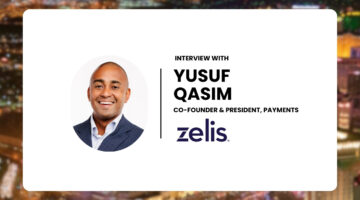
I was raised in a family of entrepreneurs who believed it was good (great, even!) to generate cash, and really bad to have to fire people because there isn’t enough money to keep them around. If such philosophies are wrong, then to paraphrase an R&B classic: “Man, I don’t want to be right.”
Earlier this month, Rob Coppedge, Echo Health Ventures CEO, published an essay for CNBC, titled in part, “Digital health is dead.” In it, Rob advances arguments asserting that the digital health venture market — he is looking at digital health startups, not products or services, per se — is marked by “underlying concerns that threaten the return profiles of overcapitalized digital health portfolios.”
Some of Rob’s admonitions are easily agreeable:
“Many [digital health firms] have lacked expertise, underappreciated health care specific workflows, misunderstood the full health care consumer journey and seriously underestimated what it takes to break through enterprise health care sales cycles.”
But a failure to do one’s homework in business is not a digital health problem; it is a lack of savvy about how to sell. (Rule #1: Know thy customer!) Rob advances other positions that are more complex since early stage investors across industries ostensibly own some responsibility for backing hype-y firms that feed the fever — and inevitably yield what Rob has called a market correction by another name (where “the ungrounded aspirations of well-meaning digital health entrepreneurs and venture capitalists collided”).
The headings below are text from Rob’s essay:
- Sales cycles are slow and adoption is more measured…The only thing that has grown faster than dollars invested in digital health has been the hype surrounding it.
Perhaps because I was raised in a family of merchants I have never understood the notion of running a business underwater without aspiring for profit. Sure, some companies take time to pop above the cash flow line, but my company, Beyond Lucid Technologies, based in the San Francisco Bay Area, has turned a profit as a health IT startup.
How does one build a business on borrowed money without a shred of sustainability? I must take care while writing an op-ed like this one, because someday I may want to raise growth capital from the very people who I am suggesting like to incinerate good money after bad, like the girl-next-door who dates the bad boy because she is convinced that she can change him. But if investors had less noise to filter out, they would find that while hockey sticks may seem as exhilarating as hockey games — it’s shots on goal that win games.
The lament regarding profit vs. expense does not refer to firms with growth rates like Amazon, which reinvested in infrastructure for years before turning a profit. Because here’s the kicker: if Amazon had stopped building, it would have immediately been cash-flow positive. I’m referring to companies that would recess — if not die — without investors from whom to suckle cash. Terrifyingly, some of these startups are dubbed “unicorns” and attract breathless headlines while teetering atop their pedestals. They trade Generally Accepted Accounting Principles (who needs them?) for undisclosed deal terms, local celebrity, and reports that they are hiring small towns’ worth of mission-driven young people — many of whom count on consistent fat salaries to cover the rent or mortgage in overhyped neighborhoods.
2. When the ungrounded aspirations of well-meaning digital health entrepreneurs and venture capitalists collided, it created an explosive environment where considerable capital was burned without building truly sustainable businesses.
If I’ve done one thing right as a CEO — and maybe it’s all I’ve done right — it’s to commit to paying down debt. With every dollar I recompense, I buy even more stability. Now my team gets to ask whether external funding can grow an already stable business that much faster? Most of our investors have asked whether they can double down; thoughtfully, not desperately, we will get to decide whether we want to take more money and sell more equity. The answer will be “Yes” if we love the folks on the other side of the table and believe the partnership will forge a stronger venture that we would have without them.
Profits buy companies the freedom to stand on their own feet and realistically justify the “hard value” (in terms of “hard costs” vs. “hard revenues”) enjoyed thanks to their innovations. As CEO, my commitment is to serve our shareholders, employees, partner-clients, and their patients (in no specific order). I have been saddened to see some of my CEOs forced to the brink — or beyond — by investors who failed to realize that good things take time to build, and that the world might not need another glucose monitoring app.

How Zelis is Transforming Healthcare Payments with Enterprise AI
How Zelis hopes to solve the healthcare financial system for payers and providers.
3. Even those that survived the 18-month sales cycle often found that successful piloting and implementation once inside required subject matter expertise, outcomes measurement capabilities and political savvy… In this market, distribution is more valuable than capital…Quality allies and partners are often more valuable than capital.
One of the reasons that I love the emergency medical services (EMS) business …though it may be complex, complicated and dramatic…, is the “siren is the soundtrack of the city” — a ubiquitous presence around the world. Yet few people know how EMS works. Even as our heroic partner-clients run toward the crisis, and provide the background hum in many American neighborhoods, 9-1-1 seems like a genie to much of the public, including the investor community.
Even the savviest, smartest investors I know tend to start sentences with, “But I thought EMS…” before they advance a theory of the business that is usually fractionally correct but mostly “not right.” (I can’t say “wrong” because there are so many local flavors of EMS, that every iteration is probably correct somewhere.) I don’t blame anyone for lacking knowledge about an industry in which they don’t operate daily; however, I do blame anyone for assuming that his / her /their preconceptions are correct just because they think they know the entire healthcare business enough to make snap judgments in seconds.
When I explain that there are four primary types of EMS in this country — public, private, hospital-affiliated and fire (plus Community Paramedicine emerging)— and that we serve them all, and that 9–1–1 is far from automated, eyes widen. Yes, there are mandates and incentives akin to Meaningful Use that have started to impact the EMS industry. Yes, preventing readmissions is a real goal nationwide, even though doing so is controversial to many Fire and EMS agencies. Yes, ambulance agencies buy stuff: emergency response vehicles aren’t powered by smiles and coffee. Gasoline and payroll cost money, ECG monitors and saline cost a ton of money. The documentation that justifies this investment is what my company does, and we get paid for it.
Yet I can count on one hand the number of entities in the pre-hospital space that have received venture investment. That’s weird, because I am an investor in companies, too, and a key criterion I look for most of all is a “market discontinuity”. It’s an opportunity that no one expected, away from the crowd, where big money can be made before increasing competition starts limiting returns. Companies that meet compliance standards, have not flouted the law, are not at war with any union, and do not have Jennifer Lawrence starring in a movie about their dénouement, perhaps could turn out to be longer-term successes.
Wouldn’t emulating Warren Buffett’s model be a good thing? Yes, he says to “invest in what you know,” but he hasn’t always been an expert in trains and chocolates and fractional jet ownership. He takes time to learn about the businesses in which he invests — to ensure that they are making money serving their makes — and thus ensures that his investments will be lasting, if not super-fast in their returns. Who says, then, that sustainable is boring just because the shape of its adoption curve doesn’t look like a checkmark…that may be doomed to look like an “A” if the graph extended out further in time?
My old friend Abhas Gupta is sometimes credited with pointing out that the opposite of a unicorn isn’t a smaller mythical creature, but rather a donkey. I’d add that if a company is a donkey, then its CEO could be an ass, if only due to a lack of self-awareness that strong fundamentals — like cash — are still king.
Photo: bowie15, Getty Images
Jonathon S. Feit, MBA, MA, is Co-Founder & Chief Executive Officer of Beyond Lucid Technologies, Inc. Prior to BLT, Jonathon served in the White House Office of Management and Budget, where he helped spearhead the relaunch of USAJOBS.gov, the federal government’s hiring portal. Before that, he published Citizen Culture Magazine and served on the faculty of Boston University’s College of Communication (Department of Journalism). Online at www.beyondlucid.com
This post appears through the MedCity Influencers program. Anyone can publish their perspective on business and innovation in healthcare on MedCity News through MedCity Influencers. Click here to find out how.






